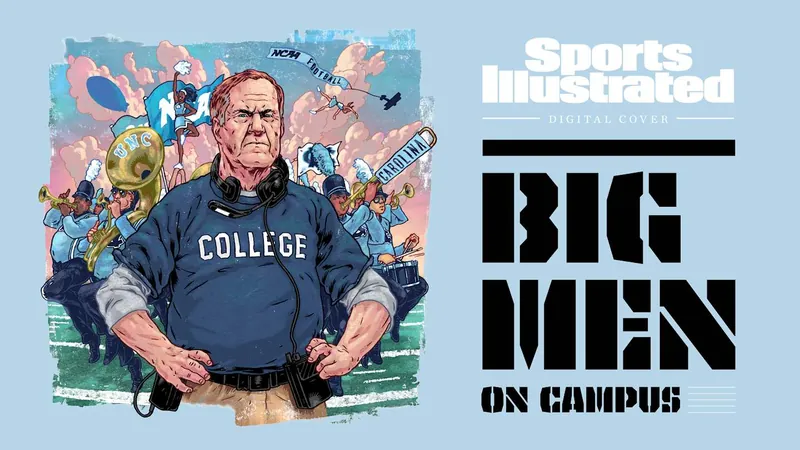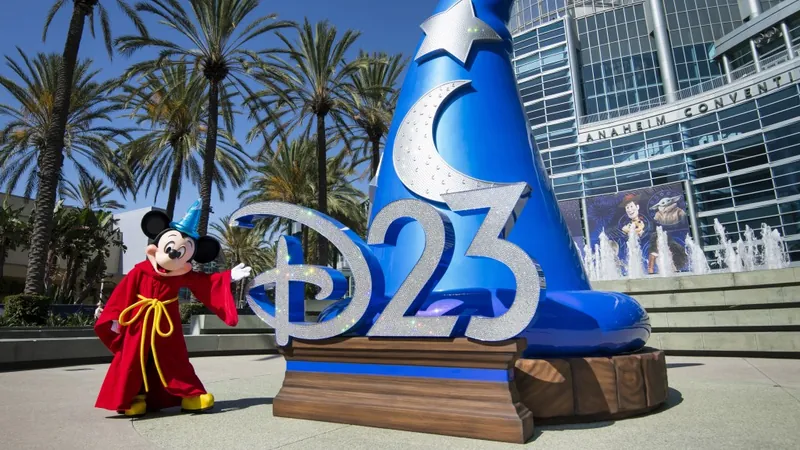
The NFL Blueprint: How College Football is Following Suit
2025-08-19
Author: Lok
From High School to College Front Offices
James Blanchard's journey in football began in the southeastern reaches of Texas two decades ago, rooted in high school highlights and early online discussions. As college coaches started scouting his peers at West Orange–Stark High, Blanchard couldn't help but notice the lack of recognition for two standout defensive backs: Deon Beasley and Earl Thomas.
Undeterred, Blanchard began sharing his insights on various message boards and social media, gradually gaining traction as a knowledgeable voice in recruiting. His foresight was spot on; Beasley played for Texas and then in the CFL, while Thomas helped lead the Longhorns to a national title game and was later drafted in the first round by the Seahawks.
Eventually, Blanchard's knack for recognizing talent caught the eye of Baylor’s coach, Matt Rhule, who offered him a pivotal role in recruiting. With his transition into Texas Tech's general manager, Blanchard embodies the new wave of college football's increasingly professional landscape.
The Evolution of College Football Management
Once limited to offering scholarships, the college football recruitment landscape has transformed dramatically. Now, as players gain the ability to transfer freely and benefit from name, image, and likeness rights, the stakes have risen. For the first time this season, schools will pay players directly, with revenue sharing caps hitting $20.5 million. This has prompted two-thirds of FBS teams to introduce general manager roles, reflecting the evolving complexities of roster management.
The structure of these NFL-like front offices varies significantly. Compensation ranges wildly, from modest salaries to figures rivaling major coordinators' incomes. For instance, North Carolina's general manager, Michael Lombardi, earns $1.5 million—an impressive figure in college sports.
General Managers: The New Power Players
General managers often have diverse backgrounds, from recruiting analysts to former NFL executives. For example, Iowa has brought in Scott Pioli as a consultant, while Nebraska recently hired Pat Stewart, a former Patriots personnel director, showcasing the crossover between NFL and college football.
Texas Tech's Coach Joey McGuire speaks highly of Blanchard's approach: "We wanted to build a personnel department that runs like an NFL team, with scouts evaluating talent alongside coaches." Blanchard now coordinates player contracts, balancing interactions with agents and staff while analyzing prospects, a shift from the bygone era where head coaches dominated recruitment.
Navigating a Transactional Landscape
Mark Pantoni, Ohio State's general manager, emphasizes the strategic shift in talent acquisition. "You'll never land the top players at every position in a single year due to their high price tags. It's not about just signing the best anymore; it’s about finding value picks." This reflects a broader change in college sports, where player relationships have transitioned from personal connections to dealing mainly with agents.
Innovative Changes in High-Stakes Programs
In a groundbreaking move, Stanford appointed former NFL star Andrew Luck as its general manager with full oversight of the football program. This autonomy allowed Luck to make swift changes, including the firing of a head coach under scrutiny. Cal also brought in NFL veteran Ron Rivera, tasking him with revitalizing the struggling program.
Rivera embraces his new role, undertaking multiple responsibilities from navigating the transfer portal to expanding the front office—all while wanting to maintain accountability and transparency within an evolving landscape.
Looking Toward the Future of College Football
Blanchard predicts that upwards of 15 college teams this season will have rosters with expenditures between $25 million and $35 million, mirroring NFL team budgets. In this new paradigm, the collaboration between head coaches and GMs will be crucial for ongoing success, underscoring the convergence of college and professional football.
As recruiting techniques and management strategies continue to blend with NFL practices, both college and professional general managers find themselves tackling similar challenges: player selection, contract negotiations, and the relentless quest for victory—each vying for a slice of the ever-inflating budget and resources.
As the lines blur between college and professional football, one thing is clear: the game as we know it is evolving, and those who don’t adapt may well find themselves sidelined.



 Brasil (PT)
Brasil (PT)
 Canada (EN)
Canada (EN)
 Chile (ES)
Chile (ES)
 Česko (CS)
Česko (CS)
 대한민국 (KO)
대한민국 (KO)
 España (ES)
España (ES)
 France (FR)
France (FR)
 Hong Kong (EN)
Hong Kong (EN)
 Italia (IT)
Italia (IT)
 日本 (JA)
日本 (JA)
 Magyarország (HU)
Magyarország (HU)
 Norge (NO)
Norge (NO)
 Polska (PL)
Polska (PL)
 Schweiz (DE)
Schweiz (DE)
 Singapore (EN)
Singapore (EN)
 Sverige (SV)
Sverige (SV)
 Suomi (FI)
Suomi (FI)
 Türkiye (TR)
Türkiye (TR)
 الإمارات العربية المتحدة (AR)
الإمارات العربية المتحدة (AR)